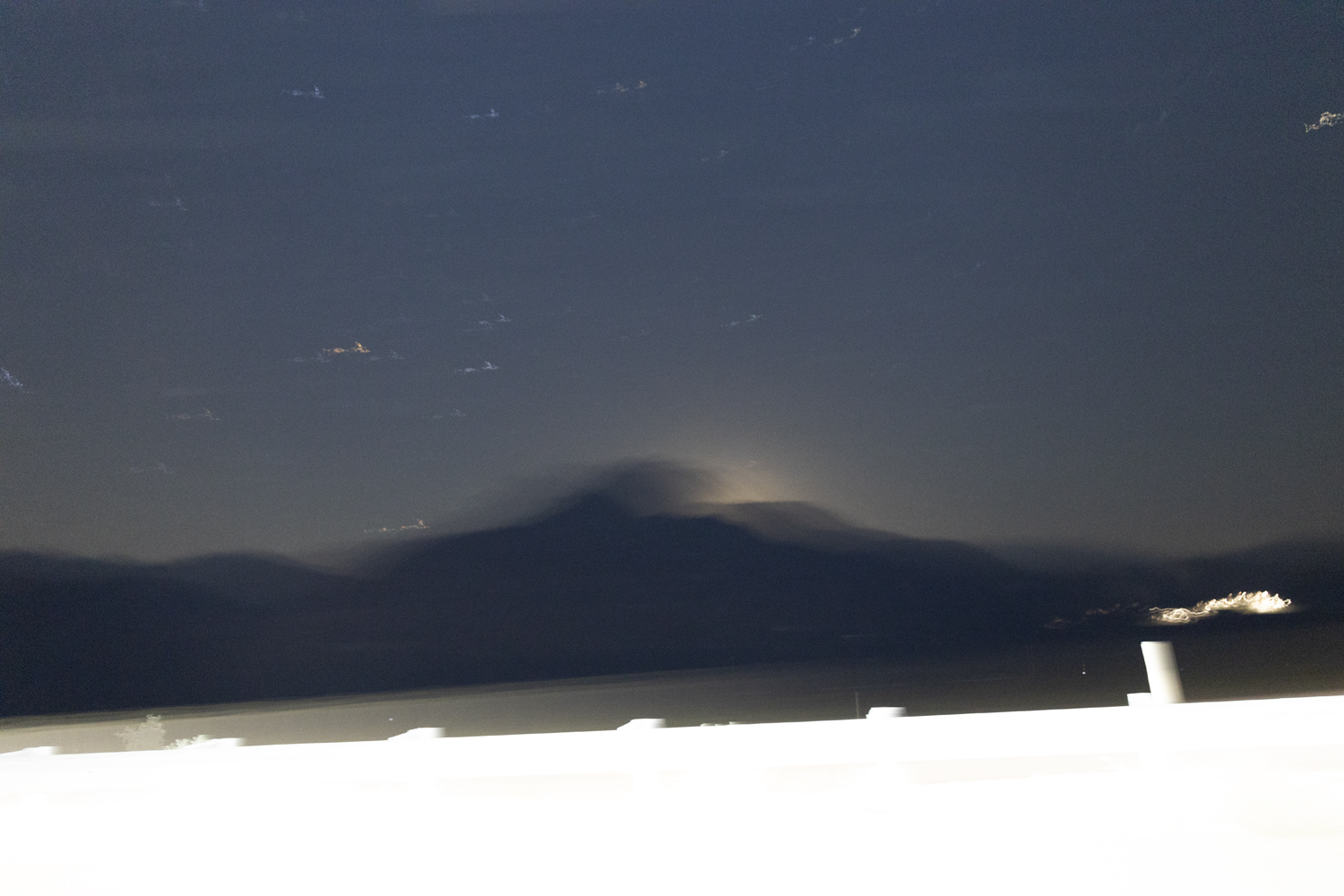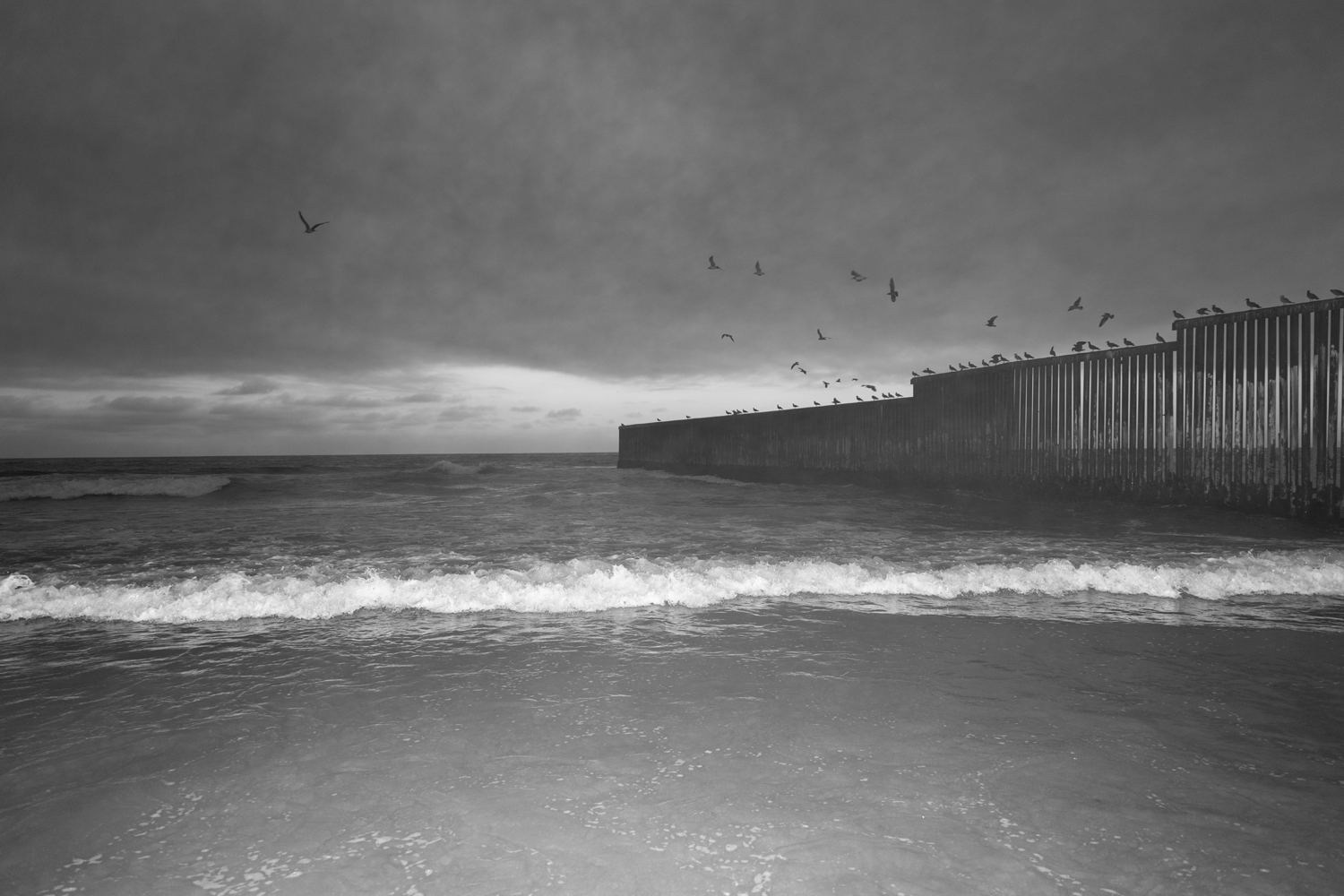More than 300 million people cross the US-Mexico border every year.[1] Its busiest port of entry is in San Ysidro, which joins San Diego with Tijuana and is home to the lion’s share of California’s 200,000 daily crossings.[2] This makes it the busiest border point in the Western Hemisphere. The seemingly endless cascade of cars, pedestrians, and goods moving across la frontera is a stark contrast to the militarised security, high-tech fences and barbed wire, and heavy-duty artillery used to police the human traffic moving north and south. In his prescient book, Magical Urbanism (2000), the brilliant political critic Mike Davis observed that the US-Mexico dividing line is but the first of three borders.[3] A second border, made up of government checkpoints intended to catch undocumented migrants and control human smuggling, exists far north of la linea. The third border, invisible to some yet painfully obvious to most migrants and refugees, is everywhere. It consists of everyday interactions where those sin papeles—and those perceived to be undocumented—are treated as disposable labour and a dangerous threat to life in the United States. For the folks that pass over them, these three borders—las tres fronteras—are places of joy and sorrow, beauty and revulsion, resilience and despair.
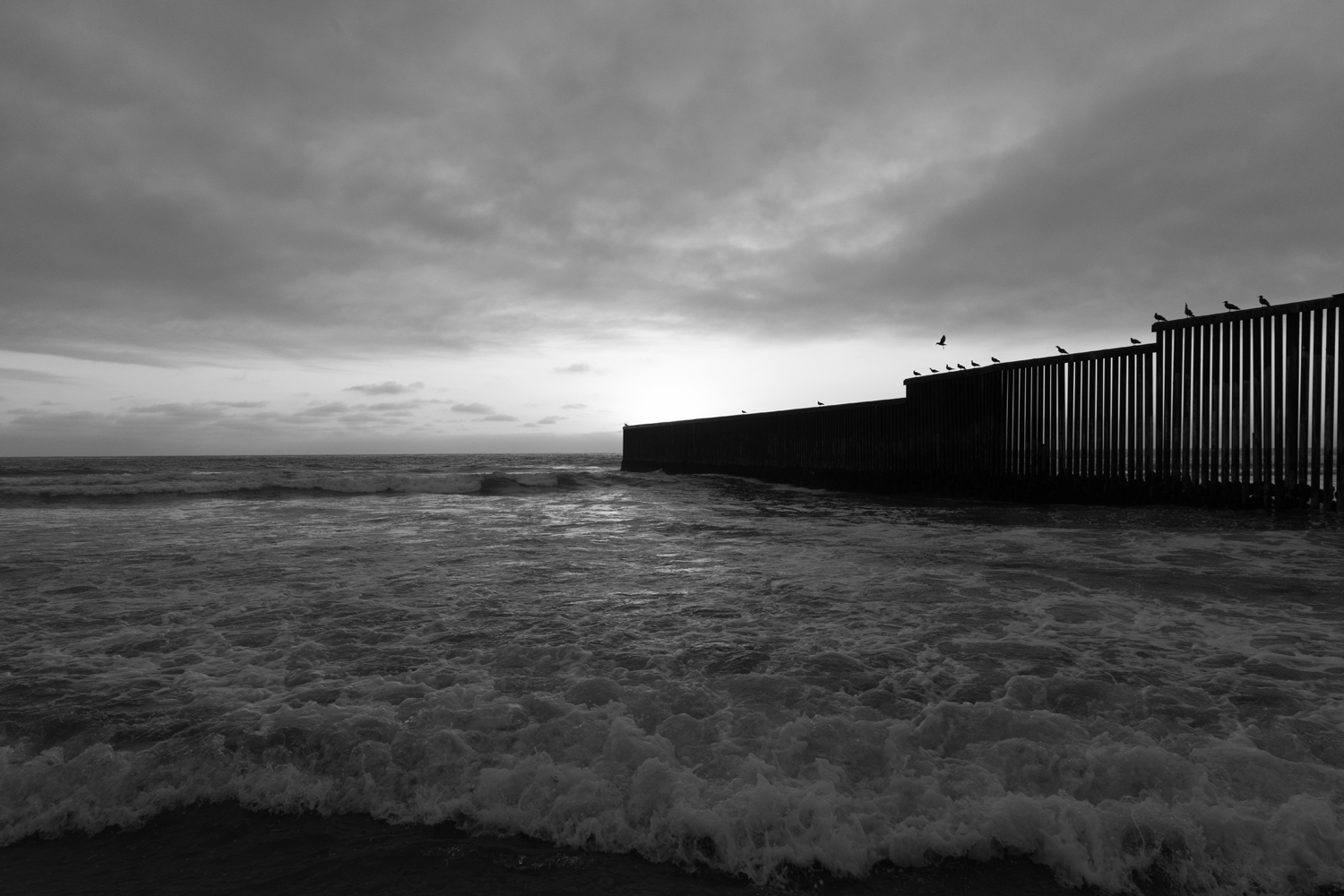
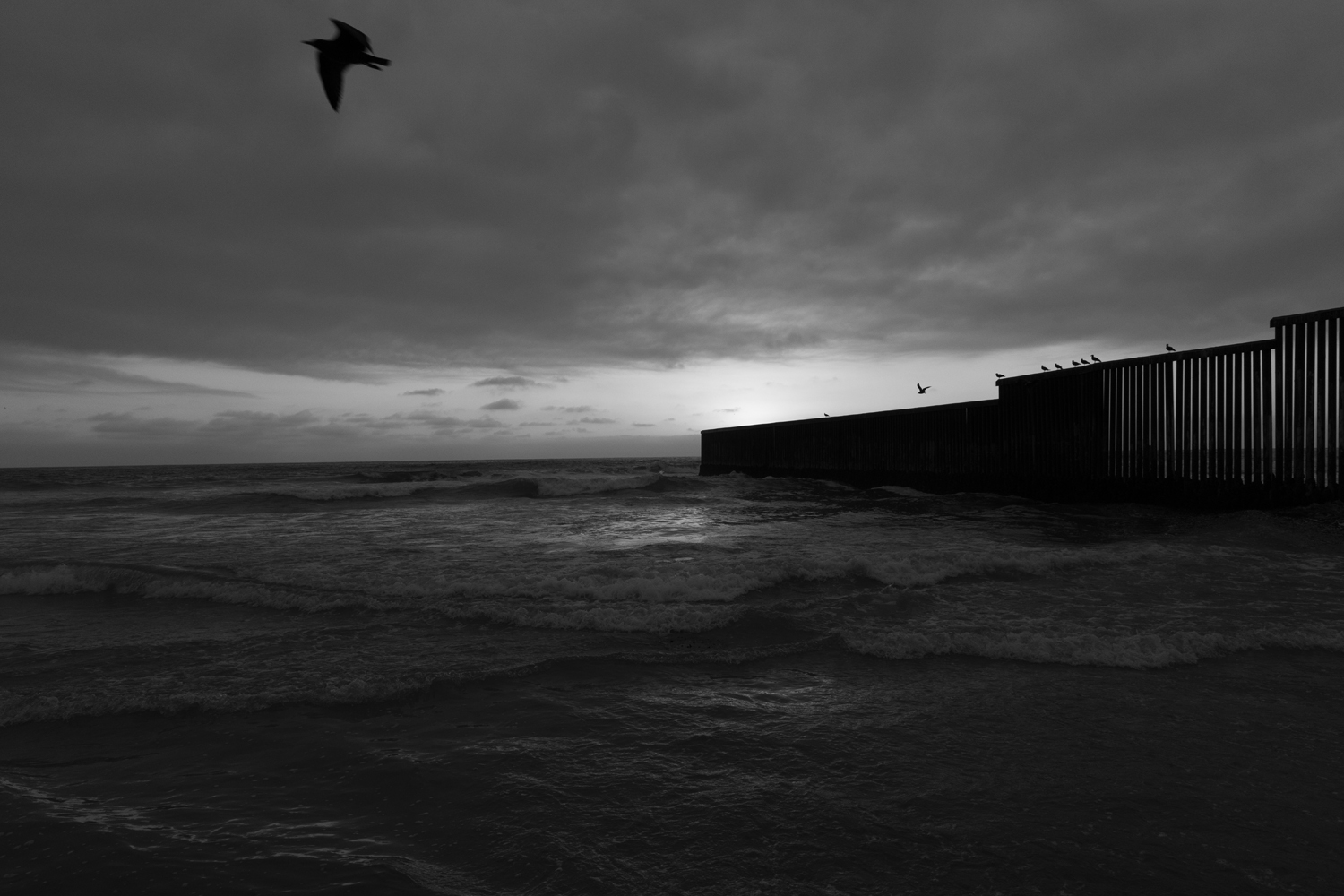
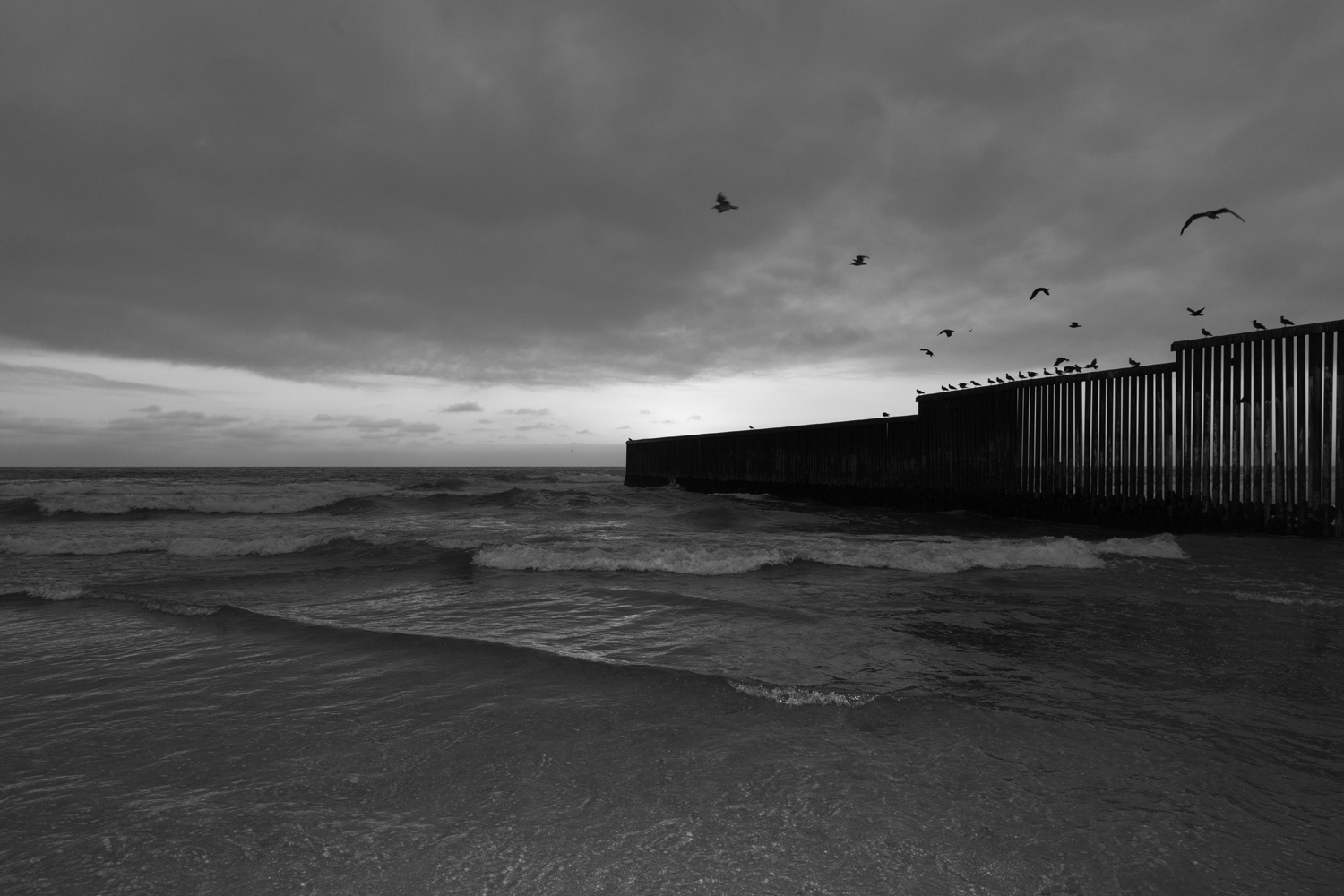
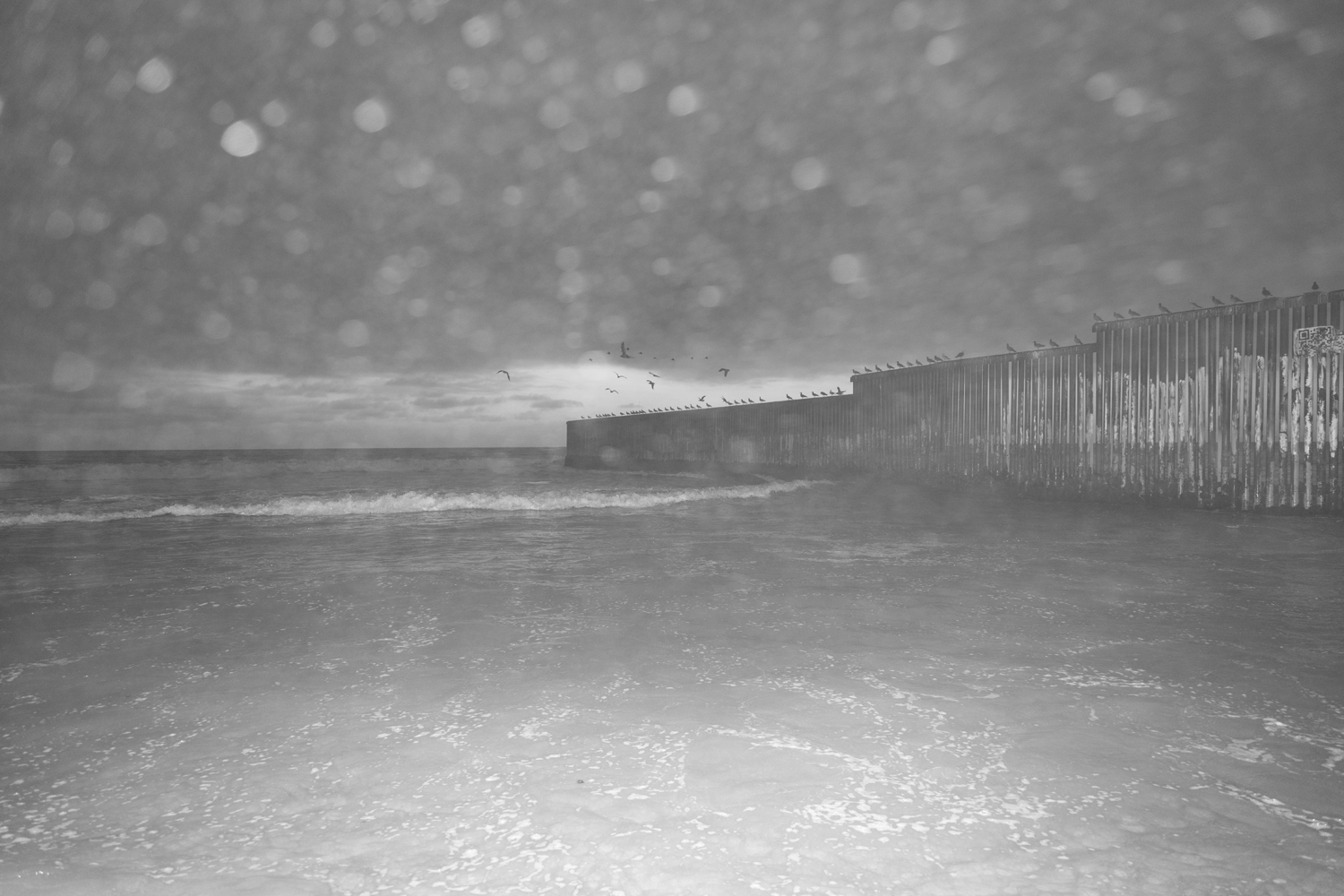
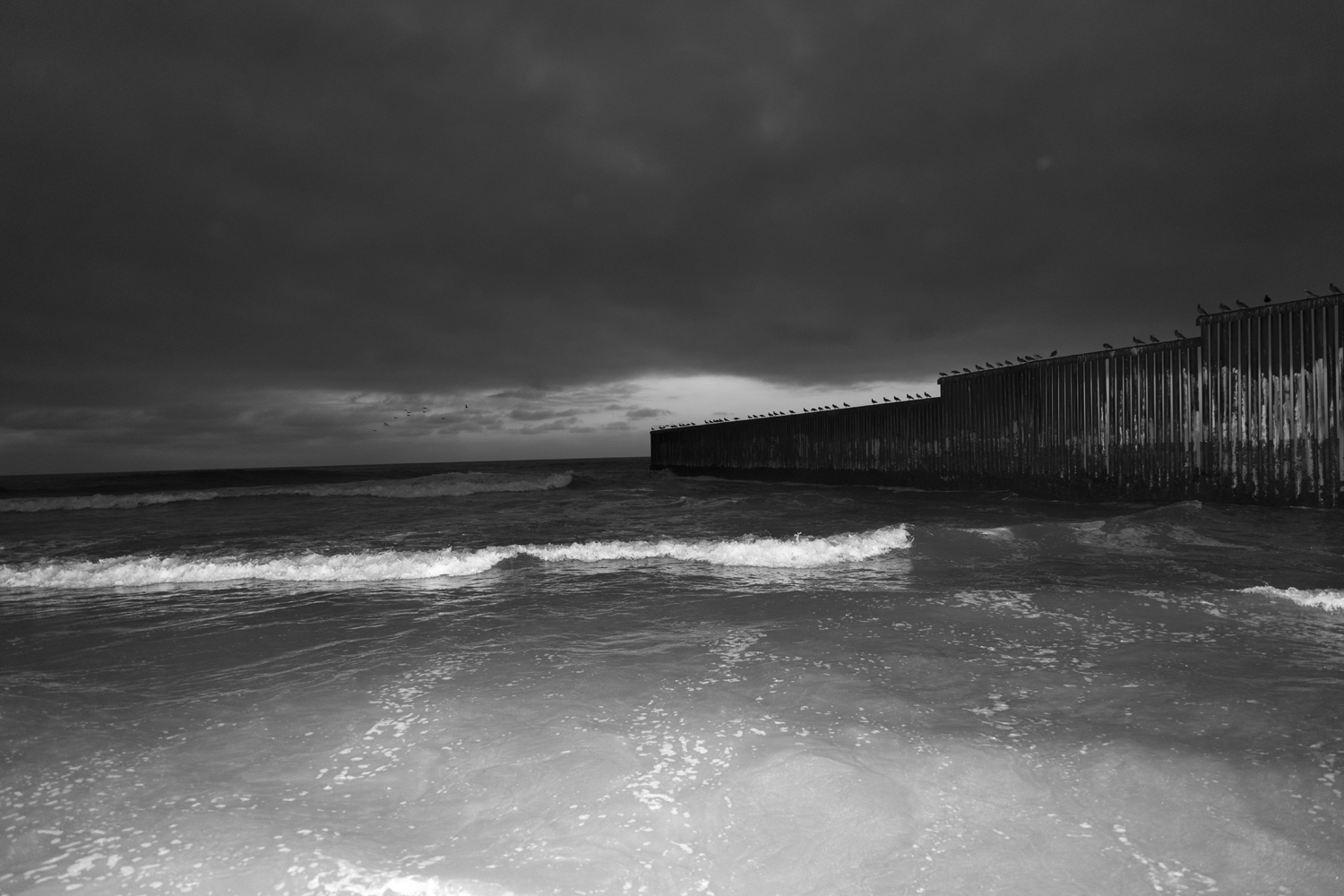
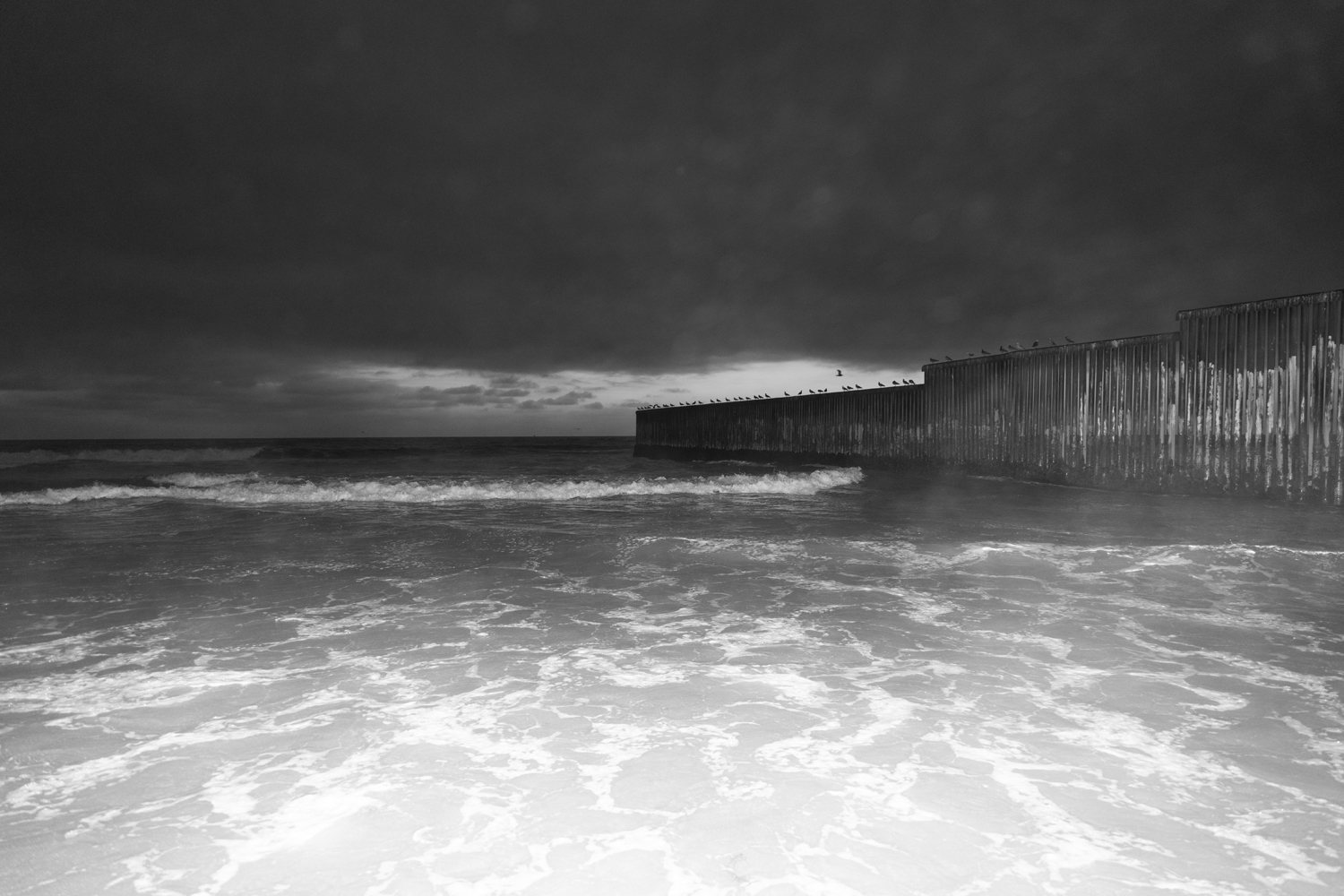
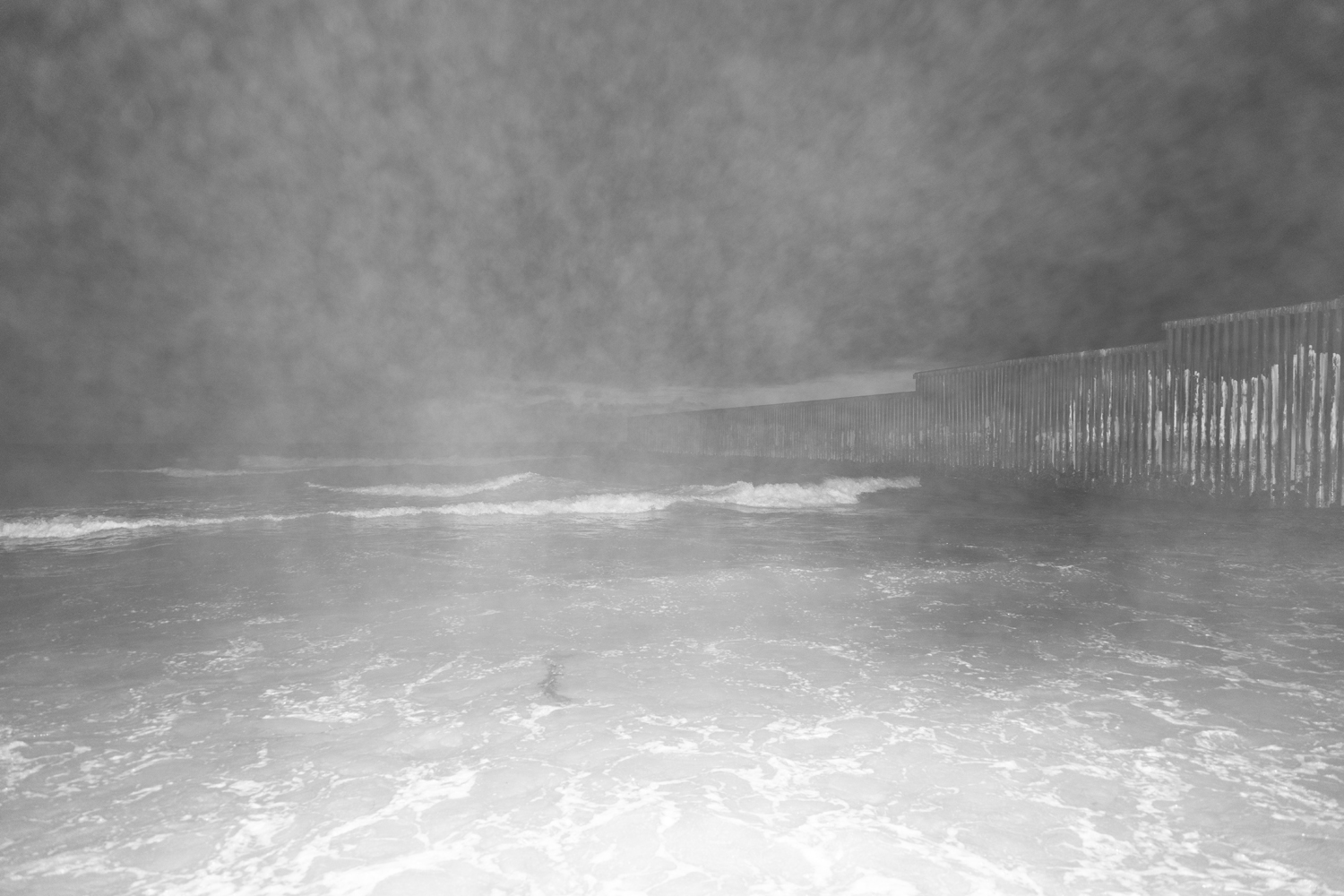
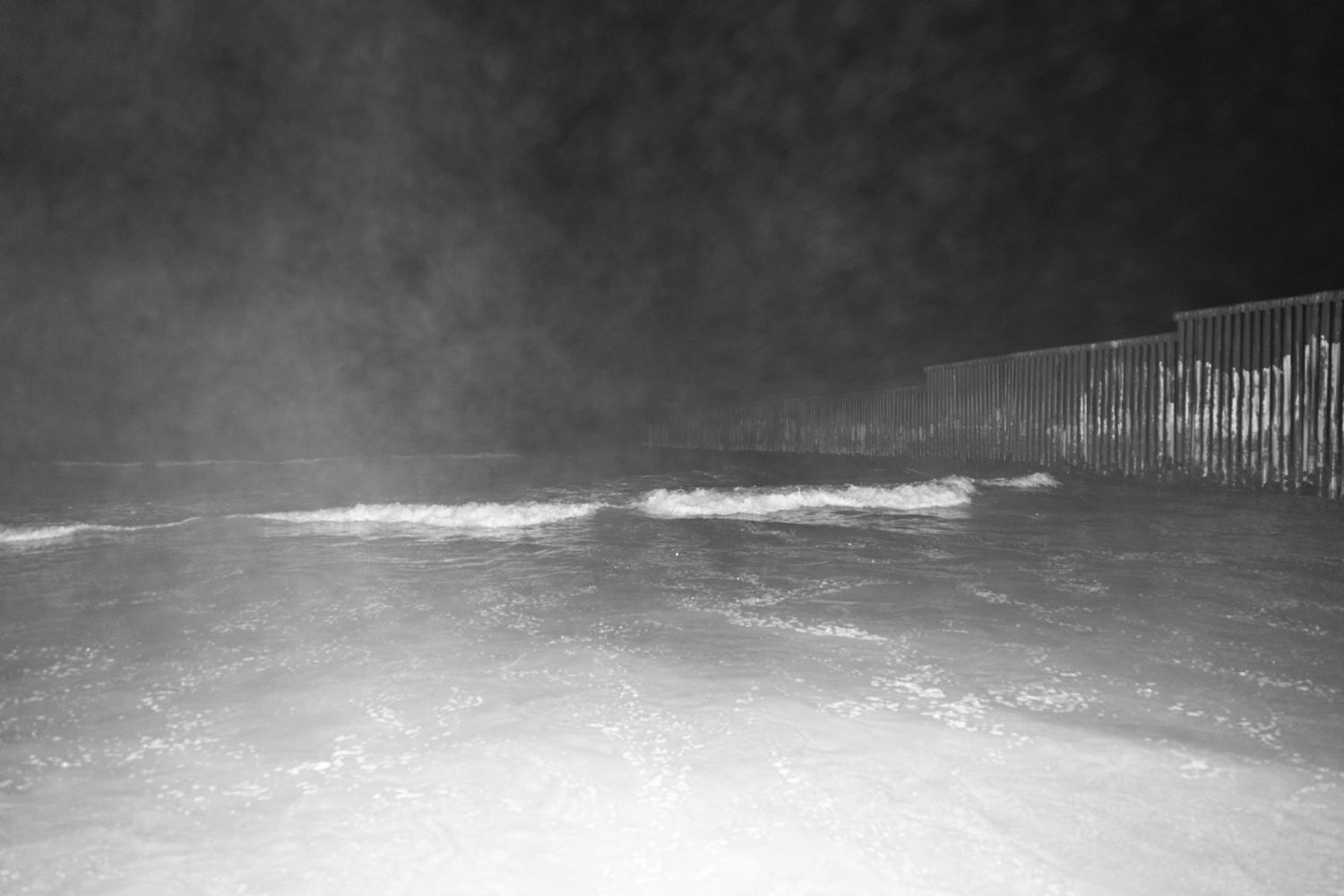
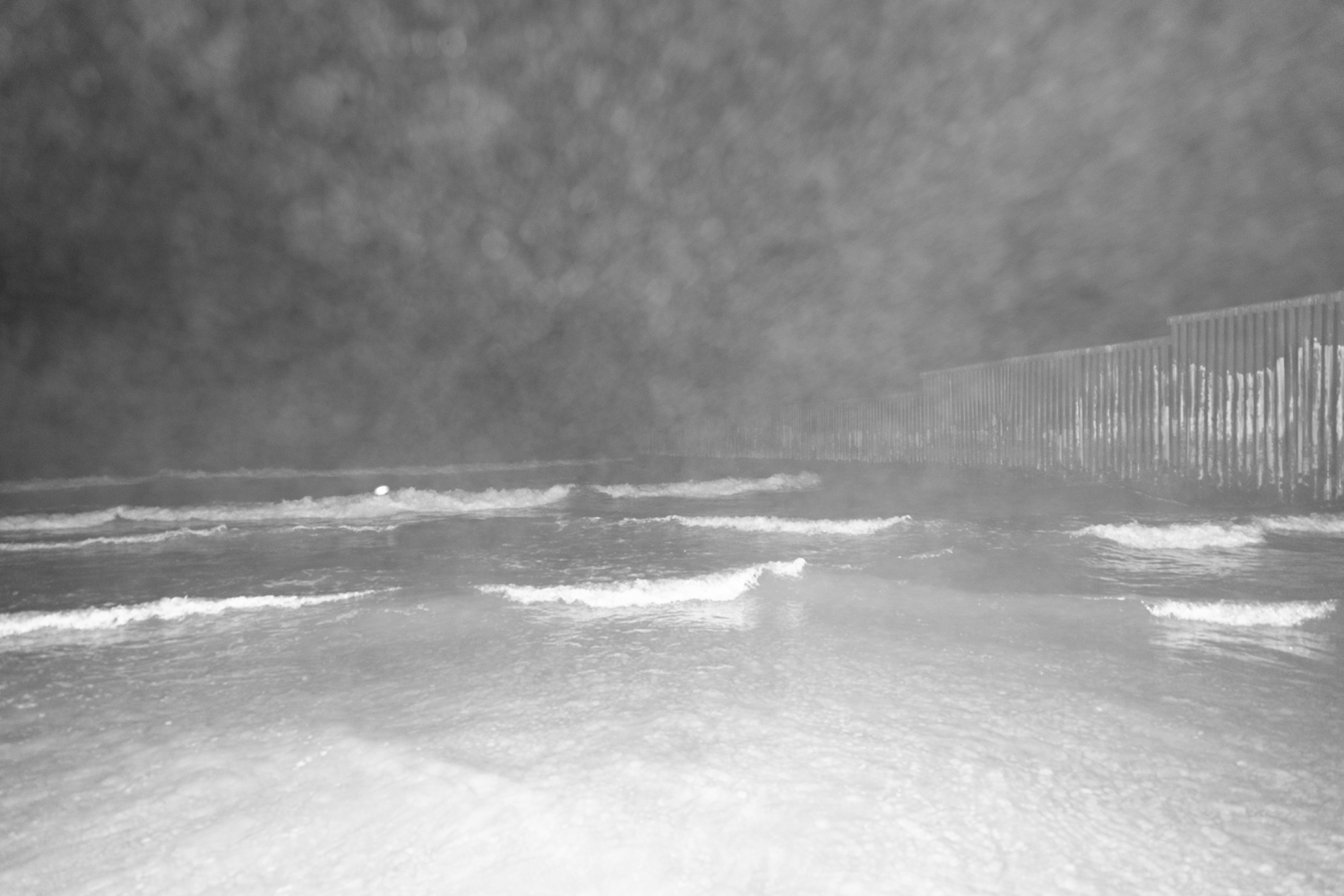
The First Border
At the border’s most western end, the fence separating the Playas de Tijuana barrio on the Mexican side from Border Field State Park on the US side stretches deep into the Pacific Ocean. Birds perch on its top, beachgoers frolic in the waves nearby, and, on most evenings, orange-pink sunsets shimmer off its towering steel slabs. This majestic border backdrop is also where migrants and deportees have been known to visit (through the fence) with friends and loved ones fortunate to have secured safe passage al otro lado. The fence is a powerful reminder that inequality pervades the border and that the border is a paradox. While economic trade moves freely back and forth, human beings are not afforded the same luxury. More than a simple dichotomy between goods and people, the border is a juxtaposition of freedom and unfreedom. Virtuoso border poet and feminist icon Gloria Anzaldua argued as much in her seminal book, Borderlands/La Frontera (1987). She famously declared, the [4]
“U.S.-Mexico border es una herida abierta where the Third World grates against the first and bleeds. And before a scab forms it hemorrhages again, the lifeblood of two worlds merging to form a third country— a border culture.”
Recent history affirms Anzaldua’s point that the border “is an open wound.” It has been ground zero in the demographic revolution that continues to rock the United States. In 1990, there were 22.4 million Latinxs in the country. By 2024, that number is now more than 65 million. In the nineties and early aughts, immigration from Mexico was largely responsible for this seismic shift. The poignant words of Juan––a Mexican migrant who crossed the border multiple times before finally settling in Southern California––remind us that there is a deeply human experience behind every immigration statistic. He said: [5]
“You come with your eyes closed because you don’t know anything. You think that you’re going to, well, that you’re going to get in…You’re not nervous about anything. You don’t have any ideas about anything.”

Another Mexican migrant, Francisco, described his harrowing experience crossing the border by foot near Tijuana: [6]
“When we crossed…we went two by two. Two running in a crouch. We were running! We continued into a sewer. I don’t know if it was rainwater or sewage, but there were big pipes… Only one of us in the front had a little lamp, and if you lost it…you were screwed. Who knows where you were going to go? And we made it to the other side…”
These are snippets of stories from just two of the 4.4 million Mexican immigrants and 15 million total Mexican-origin folks in the United States in 1990. Those numbers grew to 11.7 million and nearly 35 million, respectively by 2011. [7]
Border policies helped spark the boom. In 1994, the North American Free Trade Agreement (NAFTA) ushered in a new stage of economic development along the border, drawing migrants northward from all points south. Commercial exchange intensified, there was a rise in factory jobs in the maquiladoras, and the disparity between haves and have-nots was exacerbated. The result in many border colonias was more poverty, less social services, and increased violence, particularly against women. It was during the 1990s when hundreds of unresolved kidnappings and murders of women occurred near the Juarez and El Paso border. Around the same time, thousands of migrants died from exposure, dehydration, or being run over by moving cars while illegally crossing the border.
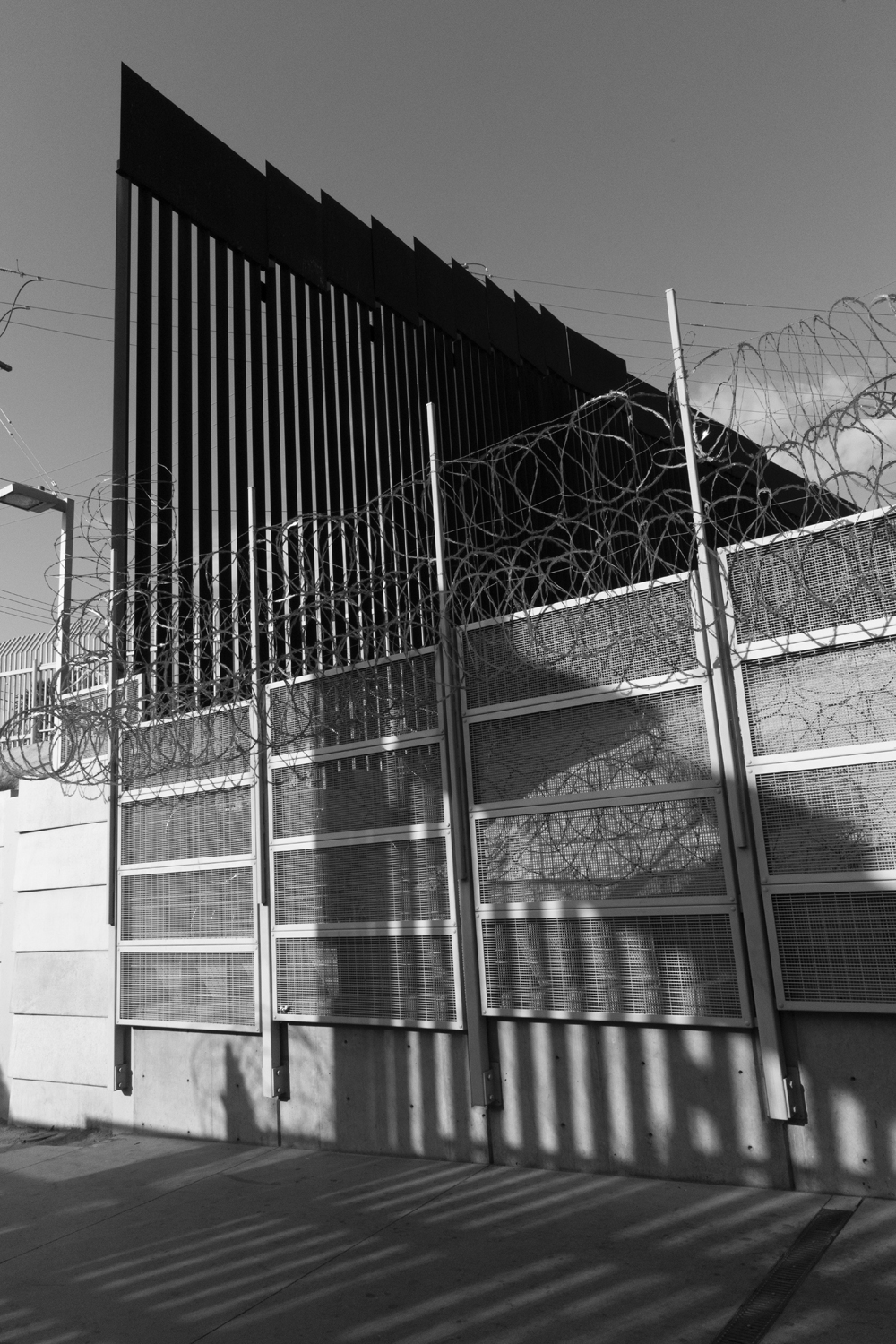
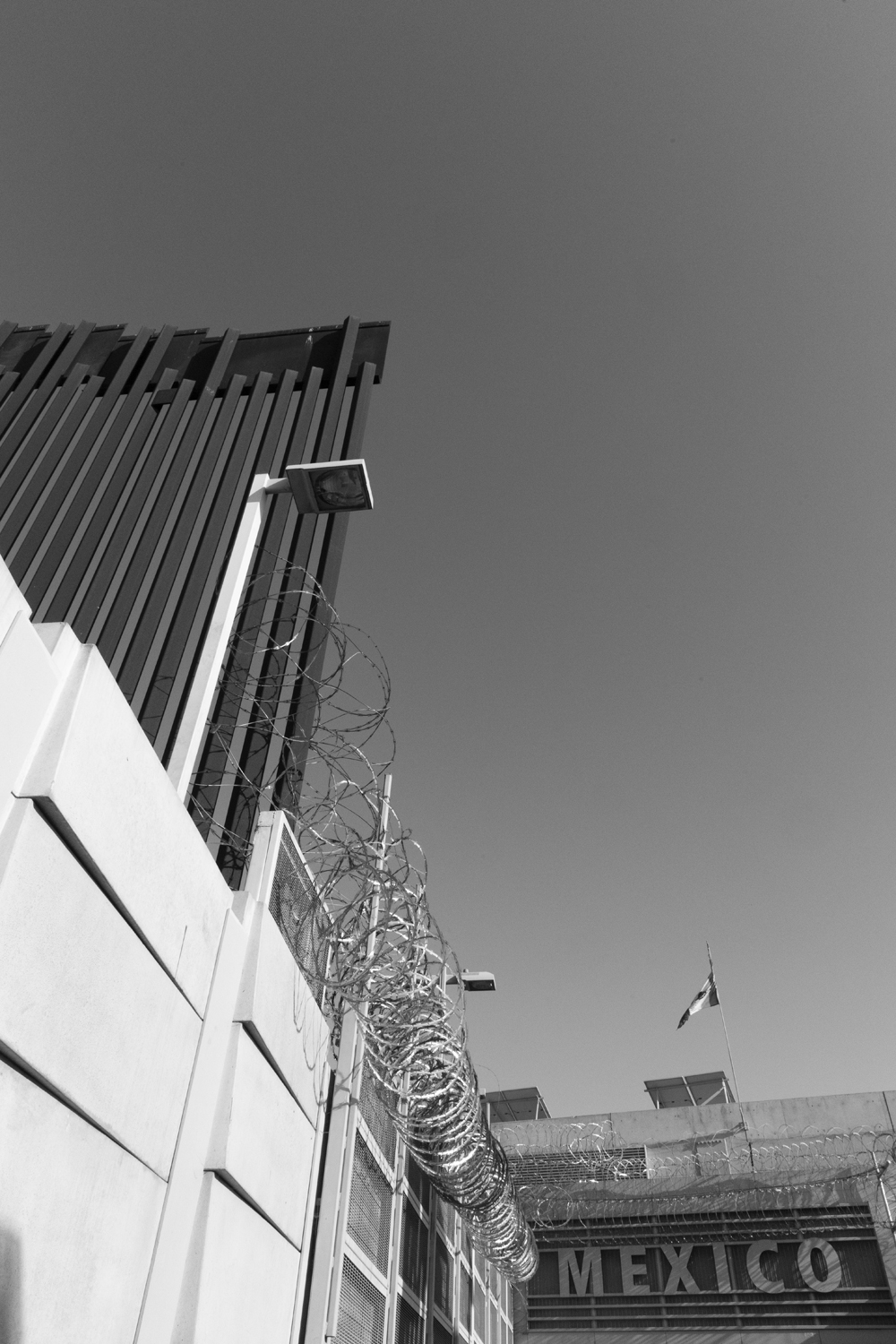
US and Mexican authorities also increasingly deployed low intensity warfare against unauthorised immigration, the war on drugs, and illegal smuggling. Military-inspired technology and enforcement techniques became the norm. The result was government initiatives like Operation Blockade in El Paso (1993), Operation Gatekeeper in San Diego (1994), Operation Safeguard in Nogales, Arizona (1994), and Operation Rio Grande in East Texas 1997). Long before Trump popularised calls for a “border wall,” California Governor Pete Wilson saved his political career by demonising migrants from Mexico. California’s Proposition 187 in 1994––a flashpoint in Wilson’s reelection campaign––limited access by undocumented migrants to health care and education at the same time it promoted impoverished debate about the undesirable impact of “illegal aliens” and “open borders” on the US economy and democracy.
Since the early 2000s, border conditions have been no less harsh. While efforts by the Immigration and Naturalization Service (INS) and its successors––Customs and Border Protection (CBP) and Immigration and Customs Enforcement (ICE)––are applauded by many, others cannot help but bemoan their dehumanisation of migrants and refugees. The turn into the new millennium brought more migrants from El Salvador, Guatemala, and Honduras across the border. Like their Mexican counterparts, they encountered an angry outcry over illegal immigration, the inevitability of “majority-minority” status in the United States, and the “browning” or “Latinoization” of California and the country at large.
Not surprisingly, a new rash of anti-immigrant campaigns followed. They included “English only” and anti-bilingual education legislation; stiff legal sanctions for aiding undocumented migrants; and “papers please” bills that criminalised migrants and spread from state to state. All stirred an anti-immigrant, racially tense, and divisive popular debate about the border that has only intensified since. Throughout this period, migrants continued to trek north in search of better lives. Their plight also inspired activism and resistance against repressive border and immigration policies. This was perhaps most visible in La Gran Marcha of 2006, when millions of people in cities across the United States took to the streets to march for immigrant rights in the biggest public protests since the Civil Rights Movement of the 1960s.
More recently, amid blustery calls for a wall and beefed-up enforcement along the border, migrants continue to follow the trail north. While many from Mexico and Central America still seek refuge in el norte, more than half of migrant encounters with the US Border Patrol in early 2024 were with migrants from different nations. A prime example is Venezuela. More than seven million Venezuelans have fled political repression and poverty in their home country under the iron-fisted rule of President Nicolás Maduro since he took power in 2013. Tens of thousands eventually landed in the United States.[8] The numbers of recién llegados from China, Nicaragua, Cuba, Ethiopia, Somalia, and Haiti, among other places, have also skyrocketed.[9]
Although the same can be said of many migrant stories, the case of Haiti is uniquely arduous. Haitian refugees left behind a home country in turmoil after a string of devastating events. Two colossal earthquakes and the assassination of President Jovenel Moïse in 2021 led to a political power vacuum in which organised crime, street violence, and economic hardship became the norm in what was already one of the poorest countries in the world. Tens of thousands fled for the nearby Dominican Republic and beyond. More than 150,000 Haitians arrived at the US-Mexico border between 2021–23 alone. Seeking the chance to start anew, they lived i encampments– like the one under the Del Rio International Bridge in Del Rio, Texas that was temporary home to more than 15,000 people––awaiting asylum or violent removal by US Border Patrol agents.[10]

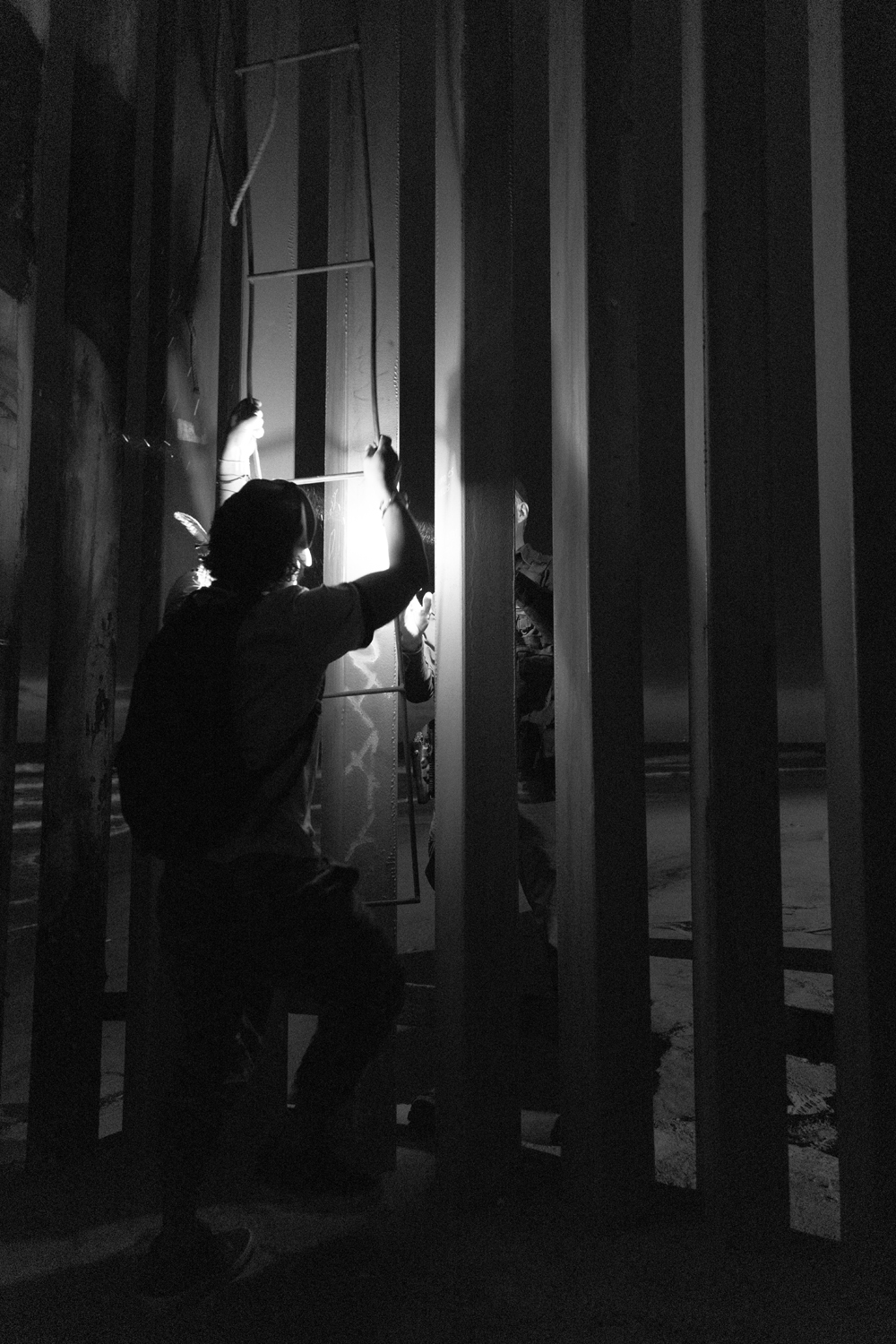
The Second Border
If you drive north from Mexico toward Los Angeles on Interstate 5, the first border quickly fades in the rearview mirror. Yet 65 miles north of the line, la segunda frontera appears. Nestled alongside the freeway lies the San Clemente Border Patrol Station. San Clemente itself is a wealthy beach community, known for its beautiful coastline, historic architecture, and popular tourist attractions. Its Border Patrol station is home to a full-time traffic checkpoint which CBP describes as “directed against the smuggling of illegal aliens and narcotics away from the border area ”[11] These contrasting images of San Clemente are enveloped in the landscape surrounding the station. The rush of traffic on I-5 blends together with the deep blue waters of the Pacific along the highway’s western edge and the militarised spectre of the nearby US Marine Corps Base Camp Pendleton.
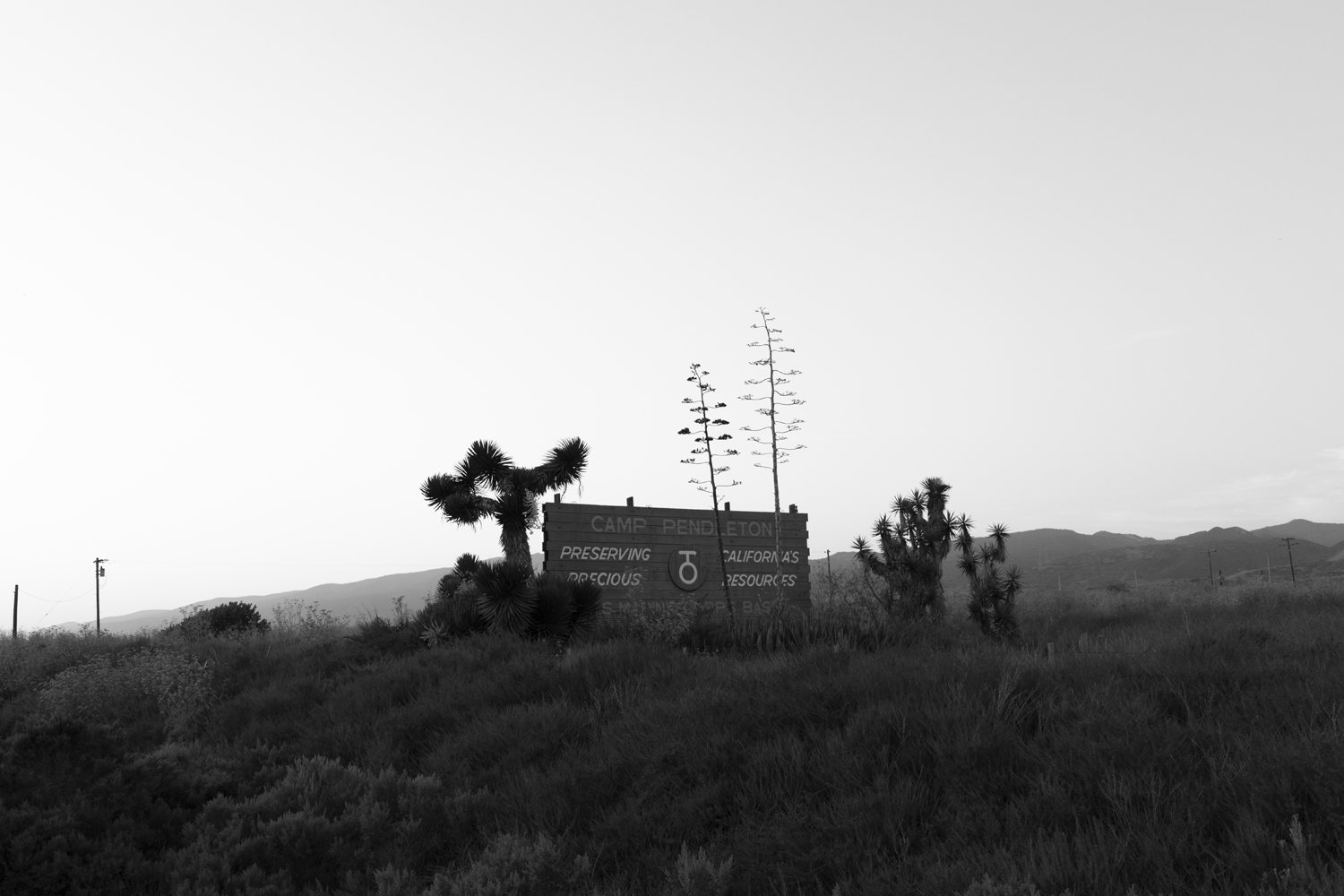
Passing through the second border can be as risky as crossing the first for most migrants. Even for US-born Latinxs it can prompt anxiety and a quickening of the heartbeat for fear of interrogation by authorities. As Marisela, a Mexican immigrant long settled in the area attested, it is not uncommon to encounter Border Patrol agents in their conspicuous “big green vans” and “green uniforms” well beyond the checkpoint throughout San Clemente, San Juan Capistrano, Mission Viejo, and other nearby beach towns. For many, the second border is an unwelcome reminder that migrant bodies are policed and controlled far north of the international boundary.
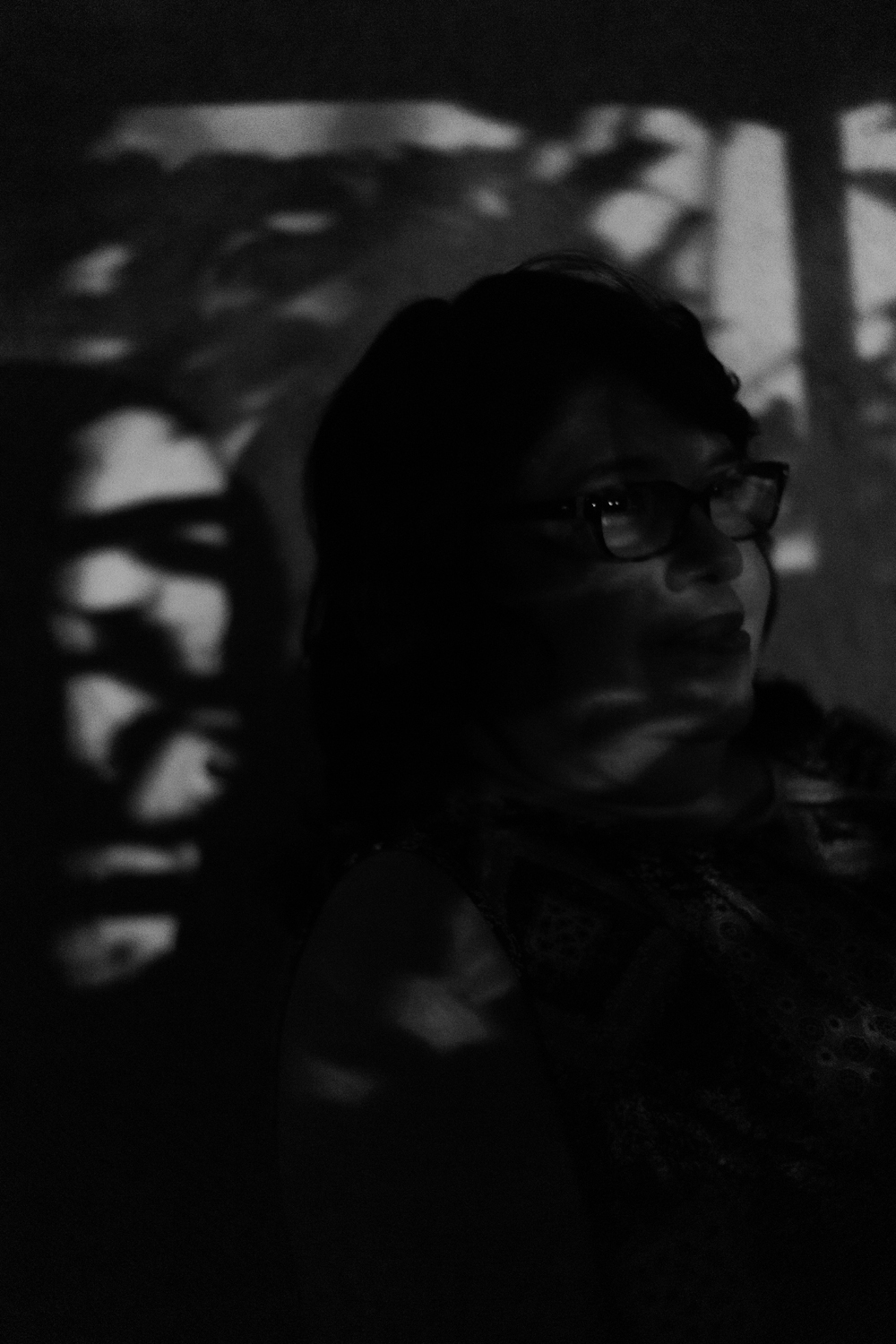
The checkpoint in San Clemente is a node in an extensive network of second borders. CBP’s San Diego Sector alone has seven additional border stations. Together they principally monitor 7000 square miles surrounding San Diego, yet the sector officially encompasses more than 56,000 square miles all the way north to Oregon. Back closer to where the United States meets Mexico, Border Patrol stations dot the map. There are stations in Imperial Beach near the Mexican side, the municipalities of El Cajon and Chula Vista to the southeast of downtown San Diego, and in rural East San Diego County, where the Campo Station near Pine Valley is located in the rugged desert and mountains frequented by coyotes smuggling migrants north for exorbitant prices. Moving west to east, CBP operates 10 more Border Patrol Sectors from southeastern California to Miami, Florida and points in between. Each includes multiple stations and checkpoints of its own. The same is true of the international border with Canada, which is home to eight more stations from Washington State in the northwest, to Maine in the northeast. Although it rarely captures the popular imagination in the way the first border does, the scale and reach of the second border is immense.
The second border is a show of force. It reassures passersby that the US government is not asleep at the wheel when it comes to border enforcement and ostensibly fortifies the safety of those who live in the interior of the country. When at peak functionality, the San Clemente checkpoint positions Border Patrol agents on the freeway to closely inspect drivers and passengers. Those suspected of being undocumented or of illegal smuggling are moved to secondary inspection sites just off of the highway where they endure prolonged questioning. For many migrants and US-born Latinxs, the reality that border policing does not end at the border means something different. It fuels fear of la migra, racial profiling, and threats of state violence. By word-of-mouth and online forums, people share alternative routes to avoid checkpoints, minimise the likelihood of being pulled over, and what to say or not say in secondary inspection. They also share stories of how checkpoints make it difficult to do things so many others take for granted, like travelling from LA to San Diego to attend a son or daughter’s college graduation. Similar to its first cousin to the south, the second border tethers people’s mobility and freedom.
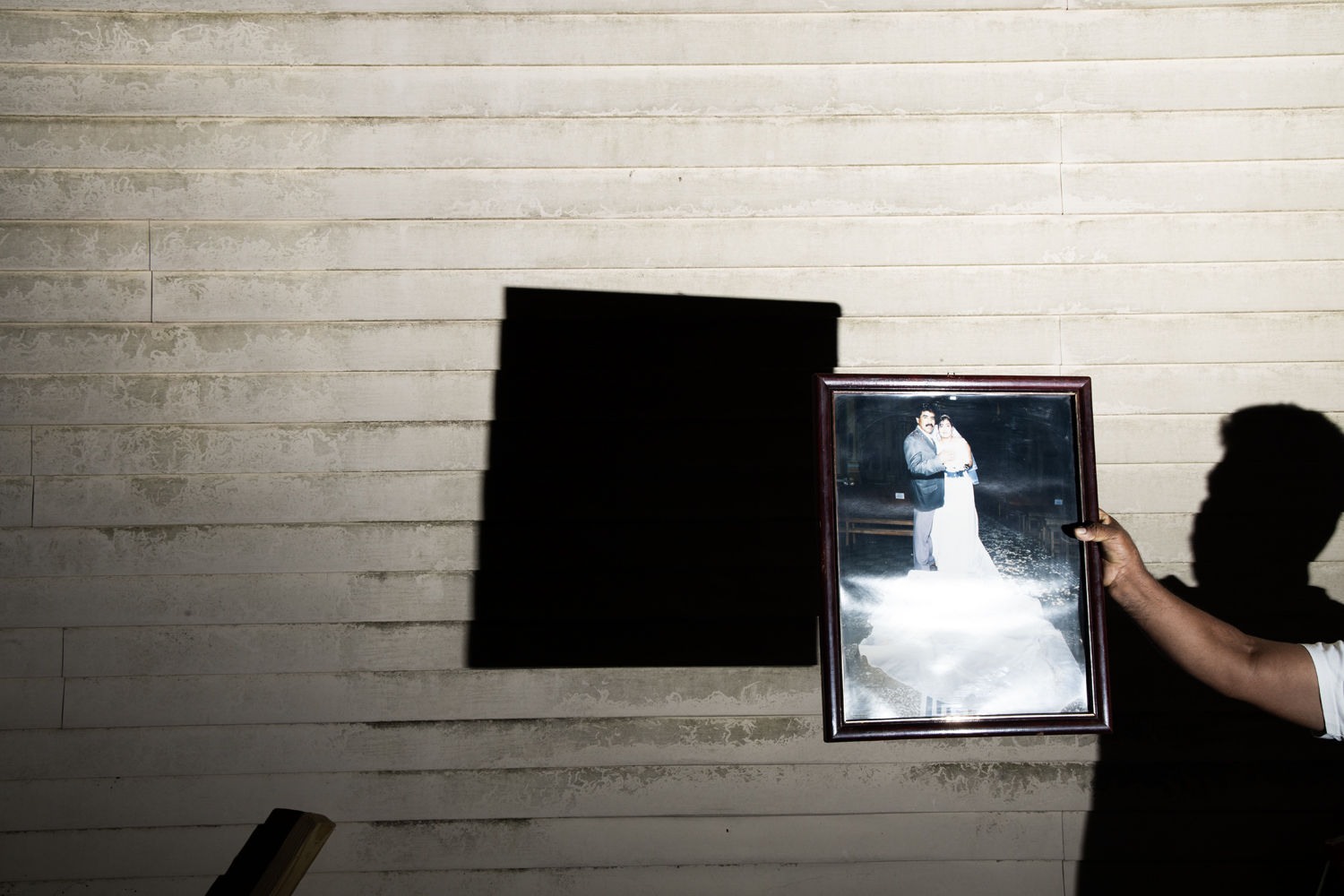
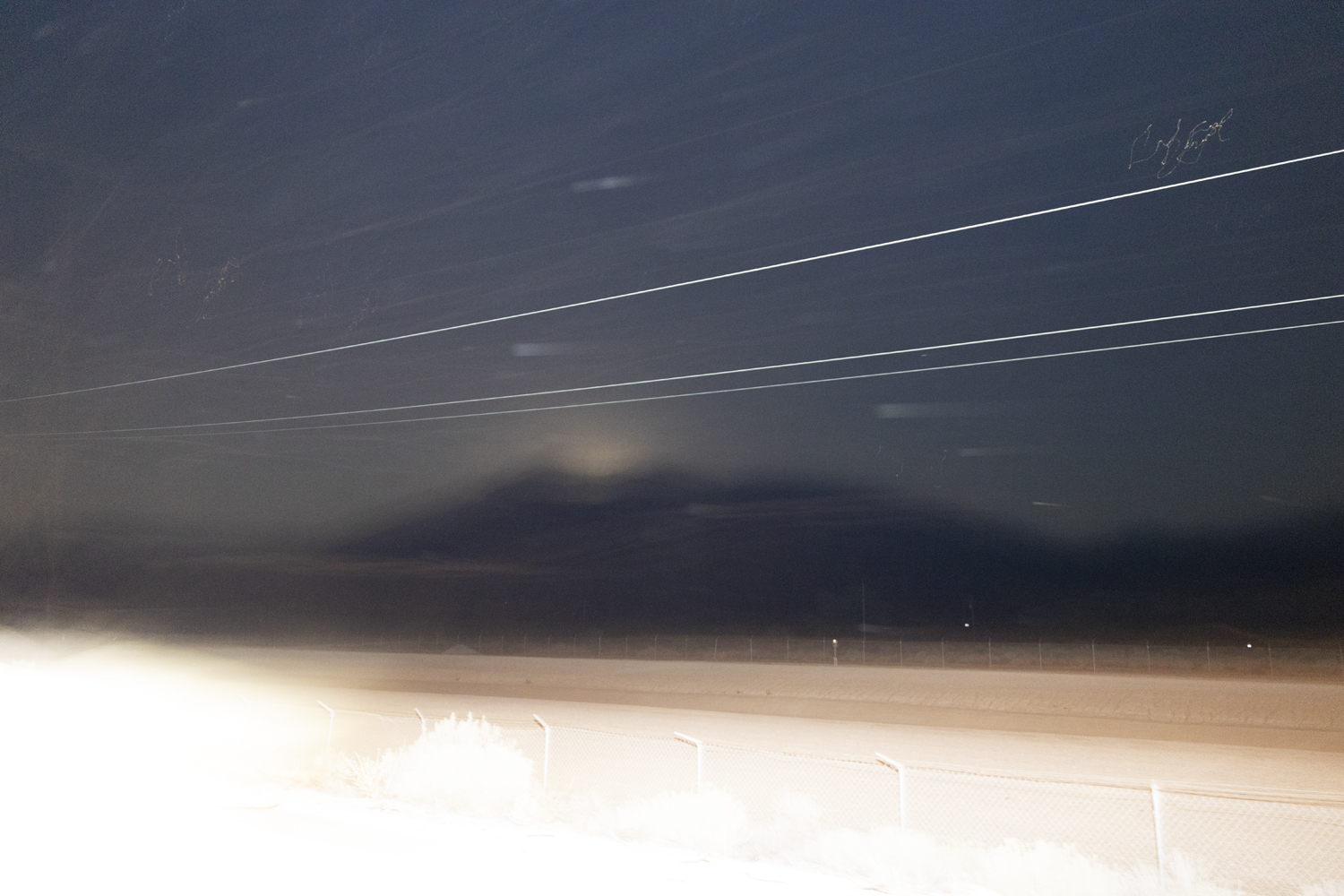
The Third Border
La tercera frontera is not always as identifiable as the first or second. It is nonexistent to many who live in its midst yet follows migrants and refugees around like a dark shadow never far enough away. It is a roving apparatus of border enforcement that infuses daily encounters between citizens and non-citizens, whites and non-whites, immigrants and native-born. The third border’s machinery takes many forms. It might be an ICE raid in an immigrant neighbourhood, vigilante harassment or violence, or the hard scrabble struggle by migrants to find affordable housing and steady work. Not only is the third border often difficult to see coming, it can deliver a blow like a punch to the gut.
Take the experiences of the recent Venezuelan migrants in San Diego, for instance. Their numbers more than doubled in the city in 2023.[12] Many travelled over land by foot, car, bus, and train from South America. They navigated jungles, mountains, and cities in multiple countries, in some cases journeying months in the most precarious of conditions. Some rode the notorious La Bestia—also known as El Tren de la Muerte. The Beast, or The Train of Death, is a freight train that many from South and Central America hope will take them through the last leg of their journey from southern Mexico to the United States. It earned its nickname because so many migrants have been killed, robbed, fallen off, or lost limbs on the trip.[13]
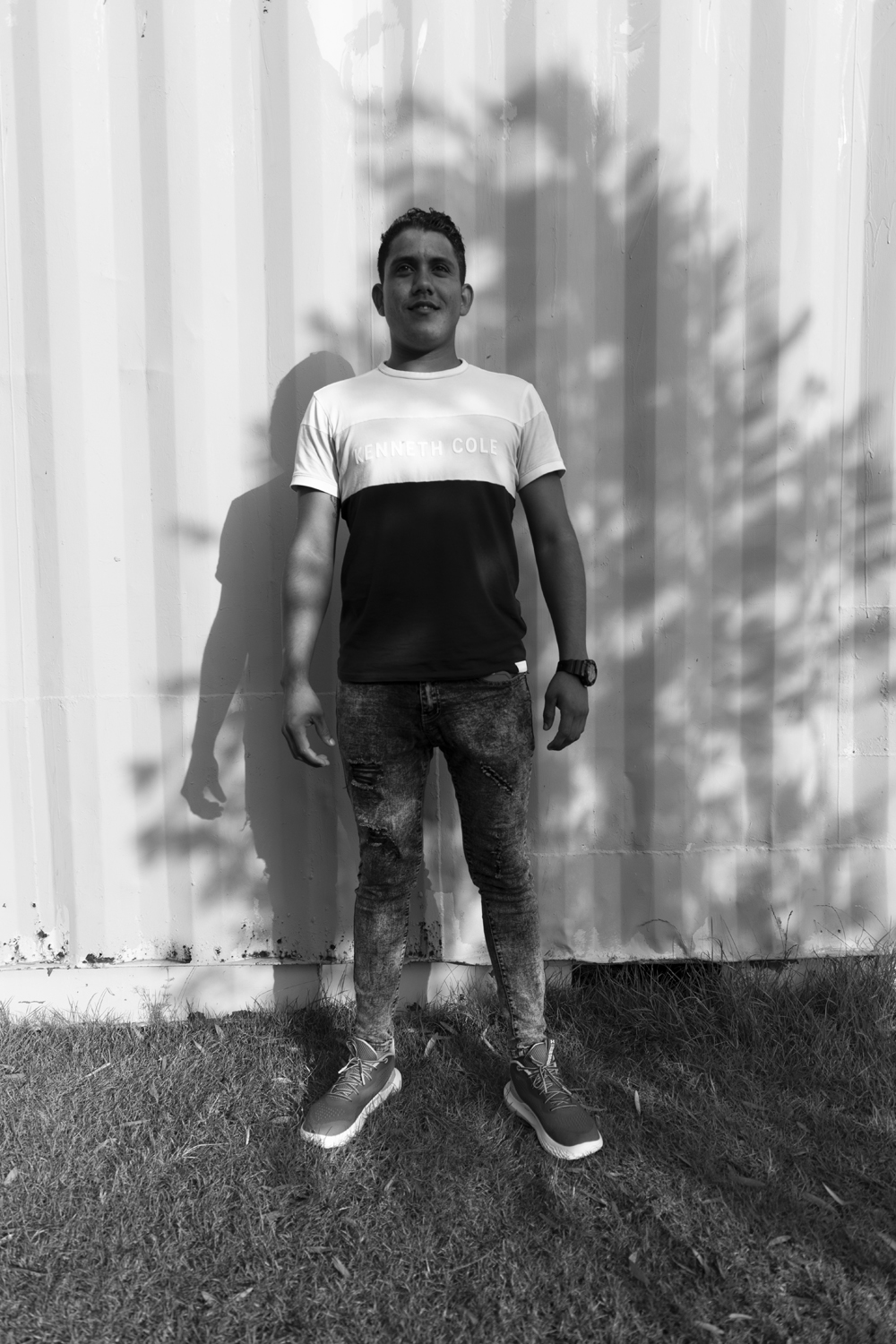

One Venezuelan migrant, recently arrived in San Diego, described passing through Mexico as a “horror movie” for his constant run-ins with violent criminals and discriminatory authorities. Those fortunate enough to reach the Texas border crossed the Rio Grande and made their way west to Southern California. Why San Diego? Some say it earned a reputation as a trendy migrant destination for being less risky than Arizona and Texas, where elected officials pursued blatantly anti-immigrant policies. For another young migrant, San Diego has “the best climate plus…there is a lot of space for us who don’t know much English…” Over the last year, the CBP released more than 100,000 asylum seekers—including many Venezuelans—into San Diego after closing what had been a temporary migrant transit centre. For most, la vida in San Diego has not been easy. Many were quickly forced to join the unhoused population upon arrival. Unable to afford housing in one of the most expensive cities in the United States, they live in public parks, under highway overpasses, or in homeless shelters.[14] While some have Temporary Protected Status that precludes deportation, most do not yet have any path to permanent residency. For months they have lived thousands of miles from home in a semi-permanent condition of political and social limbo. Despite the hardship, another migrant hoping for asylum reflected, “the journey is not in vain, nor has the journey been easy.”
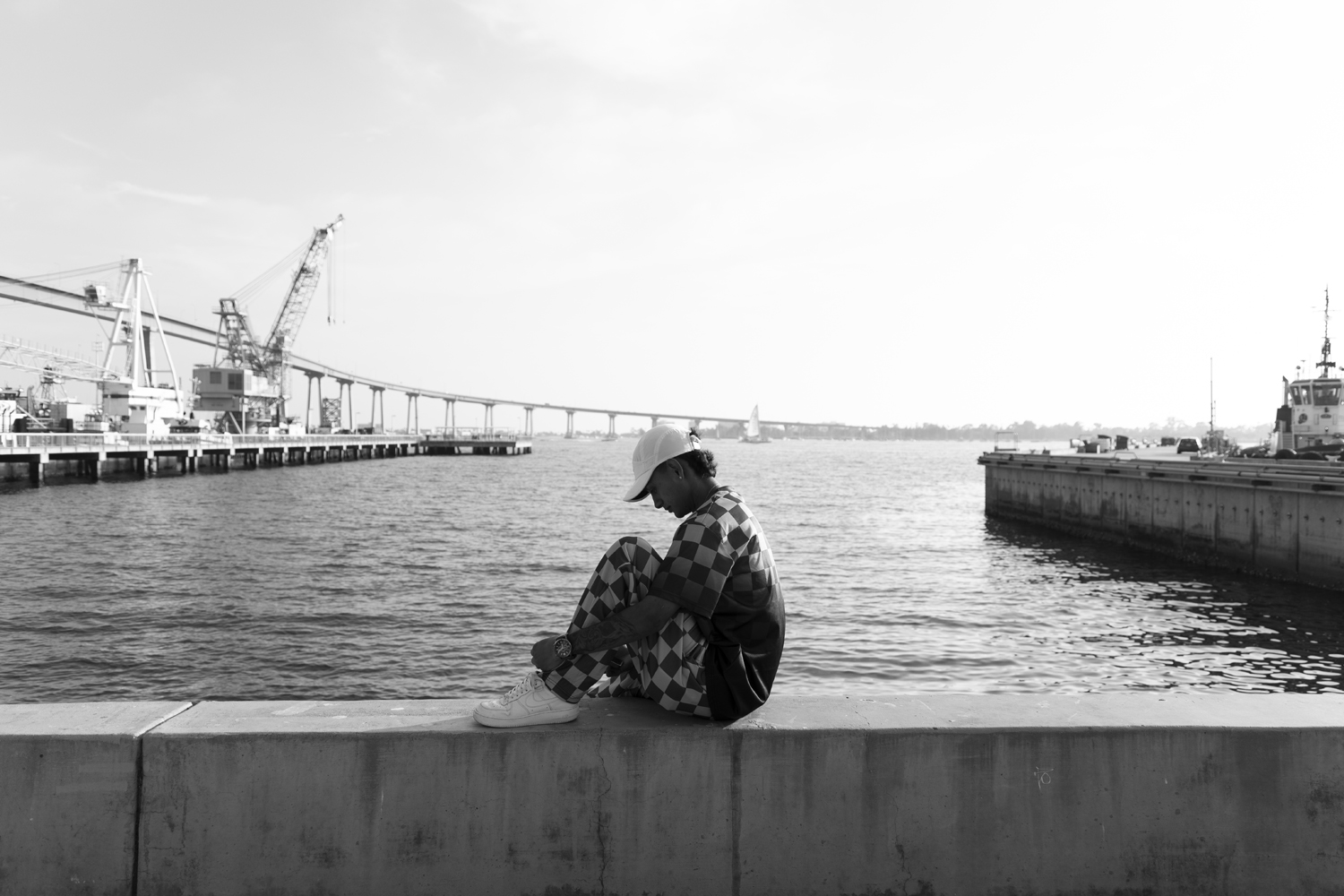
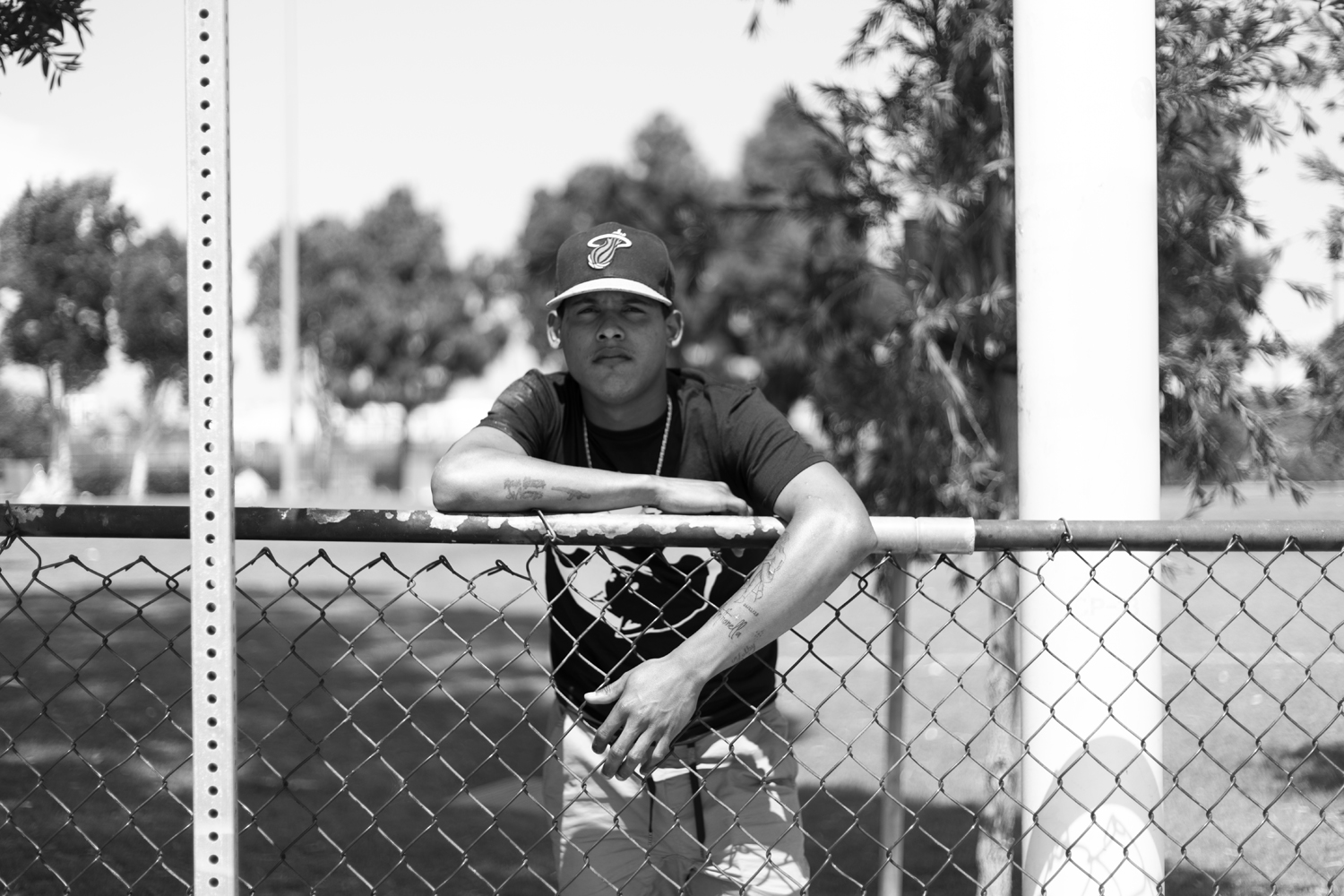
Cesar Chavez Park was home to one such encampment. With green fields, picnic areas, and a kiddies’ playground, the park is tucked along the waterfront of San Diego Bay. It is a stone’s throw from the ritzy downtown convention district and adjacent industrial borough. From the spring of 2024, hundreds of mostly Venezuelan and Colombian migrants slept in tents along the park’s edge. With breathtaking views of the towering Coronado Bridge over the Bay, migrants passed their days awaiting asylum and looking for work. They include families with kids, single young men, and those who left children behind until they are able to get on their feet in their new country. All endured the almost impossible and treacherous journey from Venezuela, only to live in what is known as “America’s Finest City” without running water or electricity, and only the park’s grungy public restroom. And yet, as one resident of the encampment bluntly stated, “we die of hunger in Venezuela…we don’t die of hunger here.”
Forced to live on public property, inhabitants are under constant risk of being arrested or cited by police which could crush their chances at asylum. By the end of August, San Diego authorities followed through on promises to clear the last of the tents from the park. They justified the decision by citing Governor Gavin Newsome’s decree to expel homeless camps from California’s public lands.[15] When asked what he would say to the American public about why he came to the United States, a twenty-something camp inhabitant earnestly and straightforwardly replied that “they come here in search of at least an opportunity.” After their camp was cleared out by the city, where the migrants went next is hard to say.
The third border is also palpable in the agonising stories of los desaparecidos. Tens of thousands of people have been disappeared in Tijuana and other Mexican border cities in recent years. While the crisis has a much longer history extending into Central and South America, there are at least 116,000 currently missing in Mexico. The number might be as high as 1,000,000 disappeared since 1965.[16] The exact number of disappeared is not known since figures are vastly underreported by Mexican officials. This is, in part, because it is not unusual for corrupt autho ities to be involved and responsible for many of the people gone missing.
The disappeared have left behind a growing community of grieving relatives looking for lost loved ones. “Having a missing relativ is to live with anguish,” a woman lamented. “It’s something you can’t close, that goes beyond a mourning, you can’t—”[17] Despite the torment, they fight for the rights of the missing. On their own and in brigades, they unwaveringly search morgues, jails, and the thickets of Baja California’s wilderness for any sign of their sons, daughters, brothers, and sisters—dead or alive. In lieu of any substantive help from authorities, social groups on both sides of the border have blossomed in support of families twice shattered: first by losing someone close to brutal violence and again, by the utter failure of the government to lend assistance. One family member said, “We started to support each other without anything, just the pain that united us to find our loved ones.” A deep and heavy melancholy can permeate the third border.
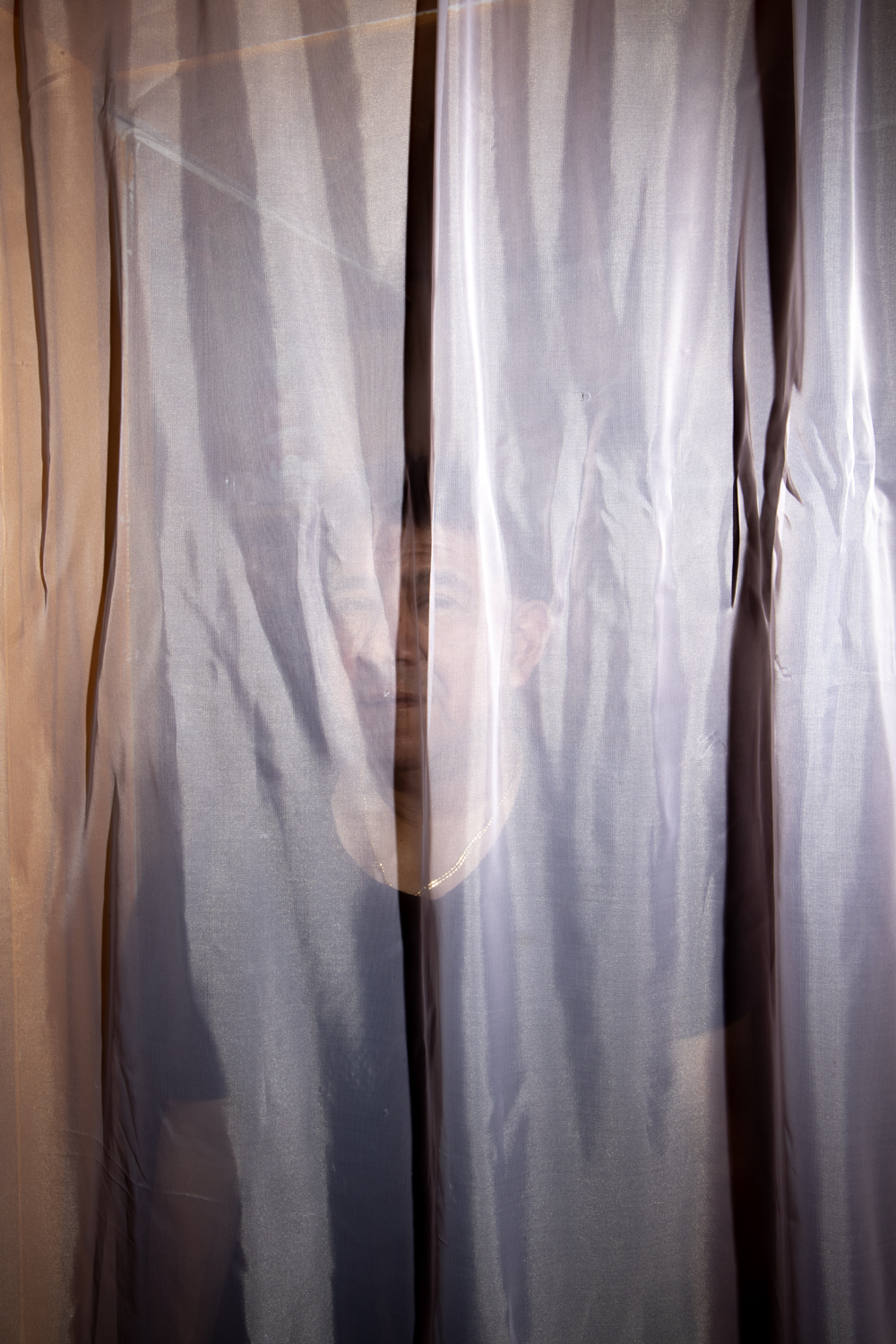
If the first and second borders can be traced on a map, the third moves ubiquitously with migrants.
As Latinx and other migrant communities have grown across the United States—in the northeast, Midwest, deep south, and elsewhere—the border has followed. David explained as much in deeply personal terms. Soon after crossing in Tijuana and settling in New York, his father died. He never saw him again and painstakingly mused, “It’s the American price that I don’t forget. I carry it here, you know…It is tough, really. It’s been very difficult, very, very difficult.” Despite the cost, he continued, “I fight for my children, so I can help them as much as I can… I don’t want my children to suffer or have a job like mine. There is no shame in what I do because I do it with dignity. I earn my money with the sweat of my brow, but I want my children to have something better than me.”[18] The third border takes a substantial toll. It is a constant reminder for migrants that life in their adopted country can be perilous and that the boundaries of the national polity are always contested. The lines governing who is considered an equal member of society and who is not are constantly drawn and redrawn. The third border chases migrants no matter where they go.

If incalculable loss and heartbreak are common along the three borders, migrant experiences also embody hope, incredible resiliency, and dreams of a better future. One woman, Monica—the sister of a desaparecido—who fled to the United States from Tijuana in fear of her own life, captured both sentiments. Of her journey across the border she said, “we were carrying death upon us.” Yet after retelling her tragic story, she ever so simply declared, “like Karol G says, ‘Mañana Será Bonito’.” Tomorrow will be beautiful.
